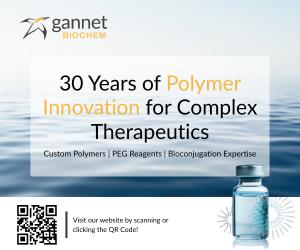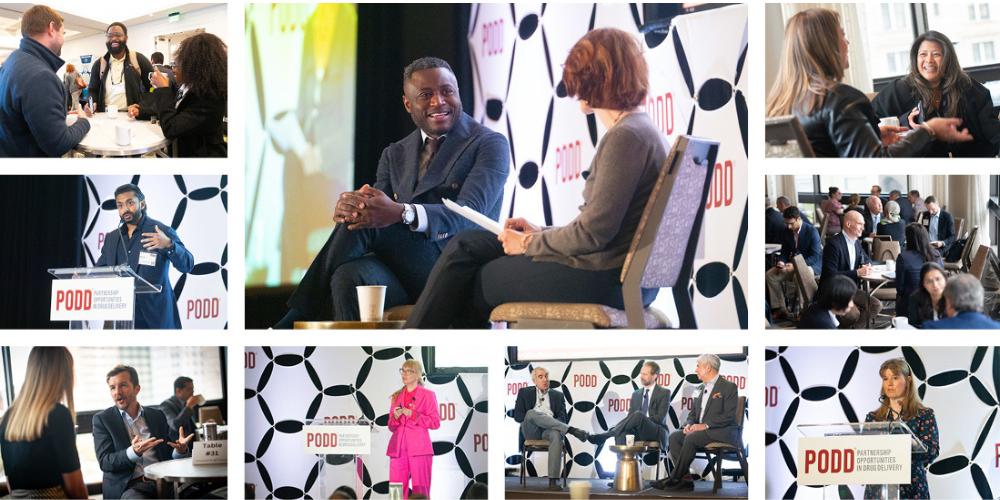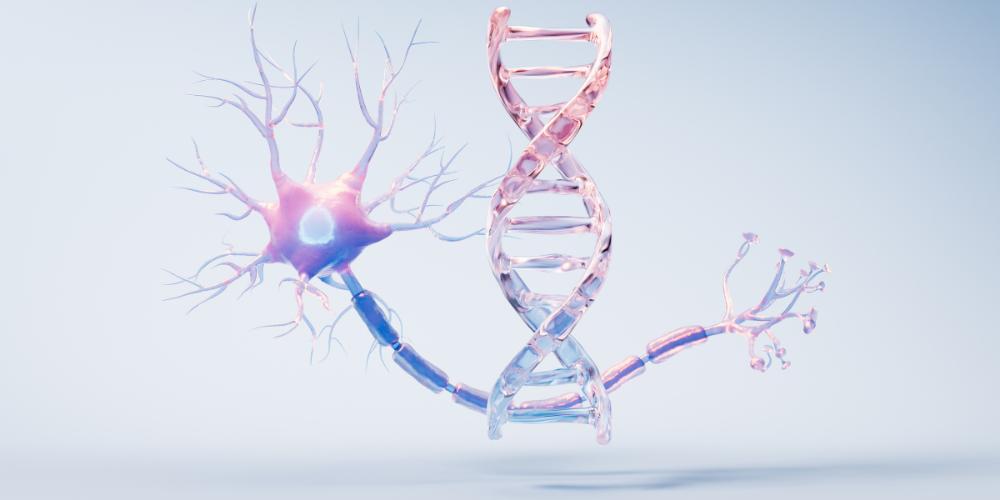How Pfizer is Improving Lipid Nanoparticle Delivery of Complex Therapies
Pfizer’s Dr Chelsea Thorn, Senior Scientist, BioTherapeutics Pharmaceutical Science R&D (PhRD), shares her work in lipid nanoparticle delivery, the future of lipid nanoparticle delivery of nucleic acids and how we can encourage more women into the drug delivery field.

Can you describe your work using lipid nanoparticles (LNPs) for antimicrobial delivery?
A lot of the work I have published and publicly available is based on my PhD dissertation, which focused on using LNPs as a solution to improve the activity of antimicrobials. Antimicrobial resistance and/or tolerance is a covert global healthcare crisis. Resistance refers to the adaptive behavior of bacteria developed to overcome antibiotics while tolerance involves the innate mechanisms bacteria have to defend themselves, all of which can lead to recurrent and chronic infections that are not susceptible to current antibiotics.
My research focused on overcoming these barriers by working in the bio-physical chemical space to protect antibiotics in these LNPs, and to introduce them into the bacteria without the bacteria realizing. I was focused on using lipids as a biomimicry tool that enabled fusion with the bacteria to increase the concentration of antibiotics directly inside. That focus on LNPs is how I came into my position at Pfizer, working on the development of LNPs but with more of a focus on mRNA delivery.
What is your team at Pfizer working on within that space?
Broadly speaking, we’re looking at ways to deliver mRNA and exploring different forms of LNPs to further the work Pfizer has already established with the COVID-19 vaccine. How can we further push that platform? What other indications can we use it for? Vaccines? Therapeutics? The capabilities of mRNA and nucleic acids is almost unlimited at this point.
"You need to be able to point out your expertise but also pivot and collaborate with other experts to create incredible therapies beyond what is currently achievable."
You recently published a “behind the scenes” look into the Pfizer-BioNTech COVID-19 vaccine development in Current Opinion in Biotechnology. What are some lessons the drug delivery industry could take moving forward?
One of the biggest things we indicated throughout that article was the fact that collaboration is key. The COVID-19 vaccine work would not have been possible without collaboration. Pfizer had an excellent collaboration with BioNTech that was already flourishing before pivoting to COVID-19. The other lesson to successful collaborations is that you need to be able to point out your expertise but also pivot and collaborate with other experts to create incredible therapies beyond what is currently achievable.
What innovations in drug delivery most excite you?
I’m really excited by how specific we can become with using drug delivery systems to mimic the human biology nowadays. We started off with complicated chemistry derived delivery systems using different targeting ligands that were focused on the uniqueness of the system itself rather than the biology. These systems did not fare too well with human biology and turned out to be nonspecific. Now we can uniquely modulate both the delivery system and the load inside, depending on the biology, to deliver the payload directly into single cells, which has always been the dream.
I’m also excited by the scale of things we can produce. We can get so miniature to build cellular machinery. I think the future will be about influencing biology in the right way and knowing how to do it.
What’s the differences for LNP delivery with antimicrobials versus nucleic acids?
On a more fundamental level, we have lots of different types of LNPs. Liposomes were a sort of first progression with a simple phospholipid bilayer working as a capsule around a drug, with an aqueous phase in the middle and a lipid phase around the outside. The LNP for the mRNA COVID-19 vaccine was a kind of big package of that simplified liposome, with both the lipids folding and packaging around the mRNA and the mRNA forming the particle structure. mRNA is quite a large molecule whereas antimicrobials are a lot smaller. That means that LNPs for antimicrobial delivery don’t have the same level of complexity as the mRNA nanoparticles. The antibiotic is not integral to the structure but is folded into it.
During my PhD research, I explored forming a more advanced structure for the liposome to achieve more biomimicry to increase fusion between the nanoparticle and bacteria. mRNA-LNPs feels like the next step: from getting your payload into simple, prokaryotic (bacteria) cells to building biomimicry systems to increase payloads into (eukaryotic) human cells. Moving from simple molecules that didn’t have complex chemical structures to adding complex nucleic acids into LNPs. The more we can create our LNPs to be more like a cell, the more effect and potential we will get from them, until we’ve overcome the biggest barriers in biology.
"The biggest limitation is knowing exactly what we want and then actually designing the way that we’re going to get there. We can want a billion things in one, but we won’t be able to get there in a broad scope, so we need some sort of specificity to build that focus."
What are the biggest challenges there?
Knowing exactly what we want. We understand cell biology and the nuances to delivering cargo there, but we are missing some of the finer detail going down to the structural level of the way those membranes work and how to influence them to work the way we want. We have major limitations in designing exactly the lipids we want to form these structures and the IP space is very dense with continuous claims of new lipids for LNP formation with little link between structure and activity. We might have many different lipids, but can we develop relationships around how and why they will work and what activity to get from them?
The biggest limitation is knowing exactly what we want and then actually designing the way that we’re going to get there. We can want a billion things in one, but we won’t be able to get there in a broad scope, so we need some sort of specificity to build that focus.
You recently received a 2022 South Australian Science Excellence and Innovation Award for your PhD research. Can you talk about that experience?
Being nominated and announced as a finalist was an incredibly gratifying recognition. I was super proud of the research I did during my PhD. I love my research and passionately want to develop something to create change for patients. My biggest goal was to get a new antimicrobial delivery system into the clinic that would work better for patients. To be announced as the winner was extremely humbling and it was lovely to acknowledge my achievements at the ceremony in front of the South Australian Science community with my family.
It’s also helpful as a spotlight. Even though I’m from a city in Australia that’s small compared to the rest of the world, I can contribute to the world of science. I hope it encourages other young girls in Adelaide to do incredible things.
How can we encourage more women into the field, both on the academic and industry sides?
The best way is to provide opportunities. More often than not, women are not given the option to spend a day in the lab and see what is possible. You can stretch the boundaries of what is possible by offering people opportunities and encouraging them to create their own paths. For me at one stage, academia seemed like the only path because Australia doesn’t have a large biotech R&D industry. There aren’t a lot of opportunities for young scientists. It’s about increasing the scope of opportunities for people.
What is your favorite part about drug delivery?
I’m a trained pharmacist so I’ve always had a really keen interest in the way that drugs work and how they are taken. For me, drug delivery was this incredible area where you combine that together and work between scientific disciplines. I’m not a hardcore biologist. I’m not a hardcore chemist. I’m a pharmacist who works at that translation. I work as a translator between doctors and patients, between the laboratory bench and going into the clinic. I really love drug delivery as the center between all of those disciplines.
It fascinates me that you can have the most active drug that works amazingly in cell culture but when you want to put it into a human you need to focus on delivery because if it doesn’t get to where you want it to go, that incredibly active drug won’t work. Without delivery, we don’t have drugs. I stumbled across this during my studies in pharmacy and I was given the opportunity to work in a lab that was focused on using nanoparticles for poorly water soluble drugs.
"I think in the short-term future we’re going to have very targeted, specific LNPs. I don’t know if we understand all the complexity needed to get there right now, and this is the critical next step."
Where do you see LNP delivery going in the short and long-term future?
I think in the short-term future we’re going to have very targeted, specific LNPs. I don’t know if we understand all the complexity needed to get there right now, and this is the critical next step.
In the long-term future we’re going to be able to understand the complexities of how to get to where we want to get with these delivery systems. We will be able to take a highly targeted and unique LNP off the shelf, put our nucleic acid or oligonucleotide inside, and use it to get to exactly where we want it to go with no side effects. We’ll be able to figure out whether to use injectables or topical solutions or local delivery to push it where we need it, and we will have the solution depending on what we need. Not only will the vehicle need to evolve but also the payload will need to evolve as well. These systems will mimic biology to the closest degree, enabling highly effective and safe cures to diseases. While I’m not a biologist, I think there is some neat machinery out there that people are building to achieve this within the next decade.








